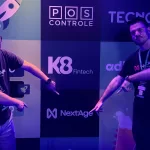System modernization is, without a doubt, one of the biggest challenges on the table for any IT Manager today. It’s not just about swapping an old programming language for a new one. Today, modernizing means ensuring the survival and growth of your business.
It’s normal to feel a dose of anxiety. After all, we’re talking about the core operation. But the good news is that you can transform that anxiety into an actionable plan. The secret lies in planning.
For this, you need a guide, and that is exactly what these 5 questions offer. Answer them before taking the first step and you’ll have a modernization project with a much higher chance of success. Ready to go?
5 key questions you should make before modernizing your system

1. What is the true cost of not modernizing now?
When discussing modernization, the first thing that comes to mind is the budget for the new project. That is a mistake. You first need to quantify the damage caused by the old system.
That damage has a name: Technical Debt. Although not widely discussed, it is much more expensive than it looks.
Technical Debt is the accumulation of shortcuts and short-term fixes that your team will have to “pay with interest” in the future. These interest payments manifest as:
- Expensive Maintenance: Few specialists in outdated languages, which makes corrections and updates slow.
- Security Vulnerabilities: Legacy systems are an easy target, as they cannot efficiently integrate modern security patches.
- Opportunity Cost: Your company fails to launch features, takes time to react to the competition, and stifles innovation.
Studies from McKinsey (2023) show that, in large companies, Technical Debt can represent between 20% and 40% of the total value of technology assets. In other words, you are losing up to 40% of your infrastructure’s potential.
2. Does my system need a rewrite or just refactoring?
This is the technical question that defines your path. The wrong choice can double the cost, halt operations, and demotivate your team.
Rewrite: It means “throwing away and rewriting.” It is only ideal for systems that are completely unviable, with an architecture so fragile that it cannot support any further improvements. It is the most risky and time-consuming option, but sometimes it’s the only way out.
Refactoring: It means “improving what already exists.” It is the most common option, where you evolve parts of the system gradually, correcting Technical Debt without paralyzing the operation.
How do you know? You need a deep technical assessment that isolates critical modules and determines which parts still add value and which are purely obsolete.
If you want to know more about this topic, read our other blog post, which discusses the difference between system migration, rewriting, and refactoring.
3. Does my internal team have the know-how and the time to run this project?
Modernizing a system is not a task for spare time. It requires full dedication, specific skills in modern architecture (like cloud and microservices), and, most importantly, time.
IT Managers often underestimate the risk of overloading the internal team. When this happens, the team is split between daily operations and the modernization project, and the result is that both fail.
Be honest: does your team have specialists in all the technologies that modernization requires? Can they halt the core business to dedicate themselves to this?
If the answer is “no” or generates doubts, you need external, specialized reinforcement. NextAge can be your ally.

4. Will the chosen architecture be scalable and relevant 5 years from now?
Modernizing only to have an obsolete system in two years is, in reality, shooting yourself in the foot.
Modernization is not just about updating the code. It is about migrating to an architecture that ensures longevity. This means thinking about Cloud-Native (cloud-based) solutions and microservices, which divide the system into smaller, independent components.
The goal is to avoid the Monolith that, when it breaks, takes down the entire operation. You need a flexible architecture that allows you to add new features (or make corrections) without affecting the rest of the system.
NextAge teams are specialized in modern software architecture. Our professionals ensure that you migrate to future-proof solutions that truly keep pace with your company’s growth.
5. How do you ensure the project doesn’t stop or fail halfway?
This is the greatest fear: starting a project and watching it drag on for months, depleting the budget and the board’s patience.
Failure in modernization projects is rarely technical. It’s usually about governance. The project fails when there is a lack of risk management, transparent communication, and clear deliverable definitions.
To minimize risk:
- Define short and clear delivery milestones (milestones).
- Create a mechanism for transparency to monitor progress and deviations in real-time. Our NextFlow AI offers a dashboard with the project’s main metrics.
- Have a partner who actively engages in risk and conflict management.
From question to action
Answering these 5 questions is your first and most powerful step toward successful modernization.
You’ve identified the risks, chosen the right technical path, and mapped your team’s capacity. Now, don’t face the challenge alone. Modernizing systems is complex and demands the expertise of those who have done it successfully.
NextAge is the right partner for you. Get in touch and let’s structure the future of your system today.






